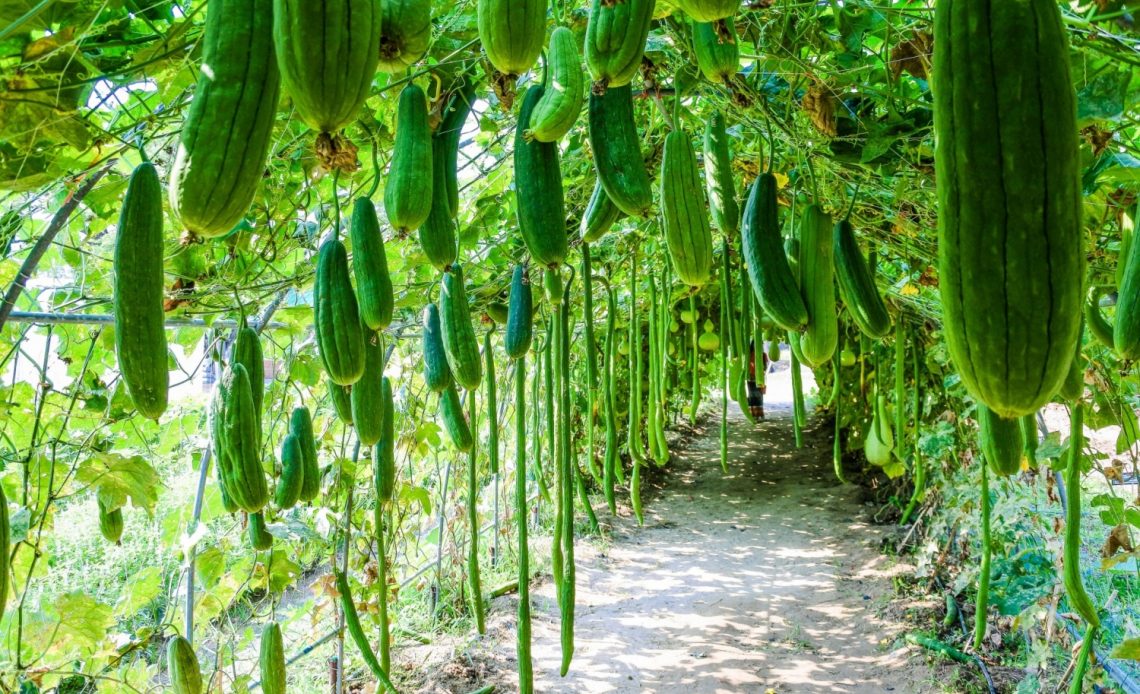

We’re here to help! Wild Yards is a completely free website that is 100% dedicated to helping you create a wildlife-friendly, sustainable yard. Read more
WildYards is reader-supported. When you buy a product through a link on our site, we may earn a comission. Every product is independently selected by our (obsessive) editors and our reviews are unbiased and objective. Read more about our mission or our privacy policy.
Growing some of the plants in your vegetable garden vertically is a great way to save space and maximize efficiency.
Training your beans, cucumbers, and passion fruit to grow up a trellis is a no-brainer. After all, these plants tend to climb on their own.
So why not train your zucchini to grow up a trellis, too?
Planting with the help of a zucchini trellis makes managing your garden much easier. It also improves air circulation around your zucchini crop to prevent infections and diseases — all while freeing up ground space so you can plant more veggies.
Today, we’ll show you some awesome zucchini trellis ideas that you can use in your garden. We’ll also cover some of the amazing benefits of growing your zucchini vertically.
Lattice, string, and wire panels can be used to create an inexpensive trellis for your zucchini. Keeping the plants up off the ground reduces the risk of rot so you have more vegetables to harvest.
10 Zucchini trellis ideas for your backyard garden
When it comes to building a trellis for your zucchini, it’s not all that hard. And it doesn’t have to be expensive, either. You just have to use your imagination.
Here are 10 trellis ideas to help you get started. Which one will work best for your garden?
Lattice trellis
Now here’s an easy DIY trellis for you. Simply tack a panel of lattice onto your house, garage, or shed, and voila. Instant zucchini trellis.
When the time comes to move your zucchini plants, transplant your seedlings in front of the lattice trellis, and use wire or string to train the vines to climb it.
We recommend using a vinyl lattice since it won’t rot. Treated lattice works well, too, it just doesn’t last as long. You can also use heavy-duty wire, like a cattle panel.
Whether you grow your zucchini straight in the ground or in large containers, using a lattice to make a trellis is the simplest, fastest, cheapest way to grow your zucchini vertically.
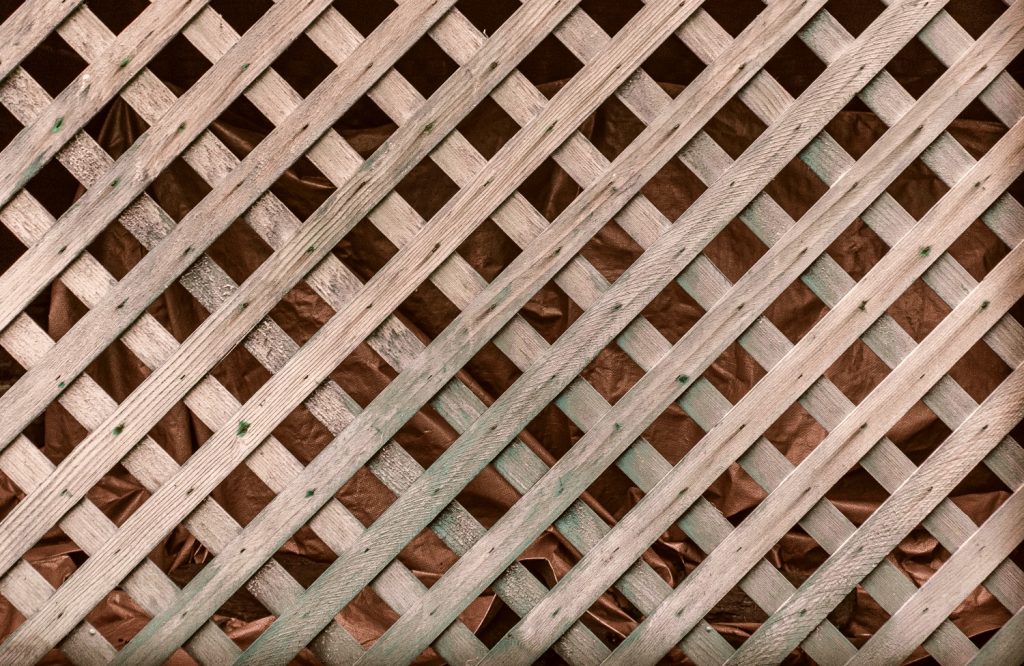
Wooden pallet trellis
Drive two sturdy stakes or t-posts into the ground and use them to support a wooden pallet to create a quick and easy DIY trellis.
Simply leaning a wooden pallet against a pair of posts will provide it with enough support to act as a trellis. But be sure to use string to secure the pallet so it doesn’t get knocked over.
You can adjust the pallet at any angle, depending on how much room you have to work with.
A wooden pallet trellis is easy to construct and it doesn’t just work for zucchini. You can use it to grow pumpkins and watermelons, too!
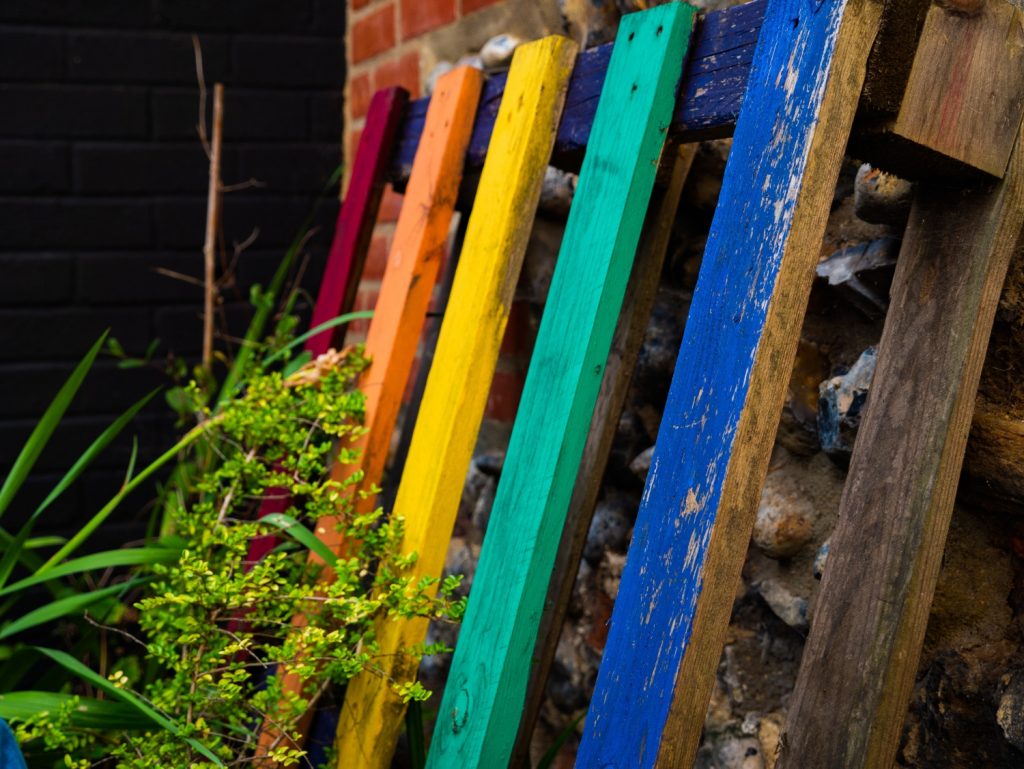
Trellis fence
Line the long side of your garden with posts (you can use t-posts, wooden posts, or sturdy stakes), then run 3 to 6 strands of wire or strong string along the inside.
Creating a trellis fence will allow you to train your zucchini plants to grow upwards, but it will give you enough room to grow other plants vertically, too.
Use your new trellis fence to grow beans, squash, cantaloupes, and more.
This is the most efficient way to save space in a large vegetable garden. Plus, the wall of vining plants provides surrounding crops with some shade and protection from the elements.
Tomato cage trellis
If you’re short on space and growing your zucchini in containers, then try using tomato cages.
Tall tomato cages will help support your zucchini plants, keeping the foliage up away from the base of the plant.
Securing the zucchini in tomato cages also makes it easier to harvest the fruits.
Wire panel arch
For this trellis, you’ll need four t-posts or strong stakes. Arrange the posts in a square, then bend a piece of wire cattle panel to create an arch. Use wire or string to secure the arch to the posts.
You can situate your wire panel arch in between rows of your garden to create shade for the plants below.
You can also place the arch between two raised garden beds to create a fun walkway.
A wire panel arch makes harvesting zucchini much easier, especially if you’re tall. This gives you a better view of the plants so you don’t have to go searching for the fruits.
Ladder trellis
If you have an old ladder, this can be used as a trellis. Your zucchini can easily be trained to climb up each rung, as long as you secure the growing branched with twine.
A ladder trellis is a great choice for small spaces. It’s also a good option if you lease or rent your home because it’s not permanent.
Once the growing season is finished, simply remove the zucchini vines from the trellis, toss them onto the compost heap, fold the ladder, and your work is done.
If you don’t have an old ladder, then simply leaning two wooden pallets together will make a decent substitute.

String trellis
Use 1” PVC pipe to construct a string trellis for your zucchini crop.
Start by securing two PVC pipes to act as posts — one pipe on each of the short sides of your raised garden bed.
Next, measure the length of your raised garden bed, and cut a piece of PVC that will bridge the gap between the post-PVC pipe. You’ll need PVC cleaner and glue and two 90-degree elbows to join the pieces together.
Once your PVC frame is in place, drape string or wire over the top pole, bringing the ends to the outer edge of the raised bed frame.
Use twine to train your zucchini to follow the strings and stay up off of the ground.
Arranging a string trellis along the sunniest side of your raised garden beds will provide the other plants in your vegetable patch with some protection during the hottest part of the day.
Tripod trellis
If you’re growing your zucchini plants in containers, or if you’re only growing a few zucchini plants, then train your crop to grow vertically with the help of a tripod trellis.
Simply arrange three stakes, sticks, or PVC pipes of a similar size into a cone shape, as if you were going to use the posts to build a tent. Secure the posts with wire or string.
Next, arrange the trellis over your zucchini plant to provide it with some extra support.
At the end of the season, you can just untie the string, and stack the posts in your shed until you’re ready to use them again.
Chicken wire trellis
If you raise your own chickens, then you’ve probably already got some chicken wire on hand. Use it to construct this easy trellis for your zucchini plants!
Build a simple frame with pallet wood or treated 1” X 4” boards, and affix the frame to a structure, or use stakes to secure it in place in your garden. Then, staple chicken wire onto the boards, and you’re good to go.
You can make your chicken wire trellis as large as you need it to be. This is a great space-saving solution for gardeners who are growing several different types of climbing vegetables.
Alternatively, you can use four wooden posts to create a V-shaped frame and secure the chicken wire to the outside. This works best if you only have a few zucchini plants you need to support.
Snow fence trellis
Pick up some snow fence from your local hardware store, and use it to build a cheap, easy trellis for your garden veggies.
Set two posts or wooden stakes, then stretch the snow fence between them. Use tie wraps to secure the fence in place.
Snow fence has much smaller gaps than wire panels, so you probably won’t need to use string or wire to train the zucchini to climb it.
Instead, just weave the long tendrils between the gaps in the snow fence as the plant grows.
Of course, weaving the plants in and out of the snow fence makes it difficult to untangle everything at the end of the growing season. So, once your zucchini has died, just remove the snow fence from the posts, discard it, and replace it.
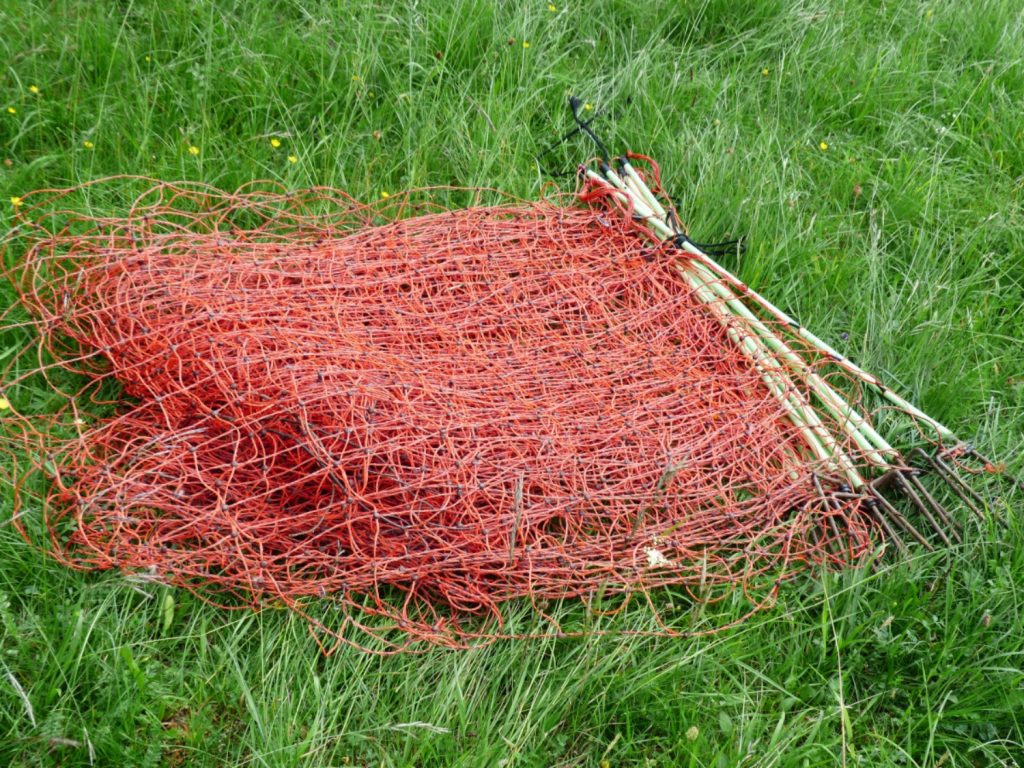
What are the benefits of growing zucchini up a trellis?
Obviously, the biggest benefit of growing zucchini up a trellis is that it saves a ton of space! If you’re an avid gardener with limited room to grow in, using a trellis to grow your zucchini allows you to make the most of your garden.
But there are other benefits of using a trellis to grow your zucchini that are worth considering, too.
Improves air circulation
We’ve touched on this here and there throughout our conversation, but another huge benefit of growing zucchini on a trellis is that it promotes airflow.
Keeping the plant’s foliage up off the ground allows air to pass through the leaves more easily. This helps wick away moisture preventing humidity from getting trapped in the foliage.
Since fungal spores and other pathogens thrive in moist conditions, growing your zucchini on a trellis helps prevent diseases, keeping your crop in good health.
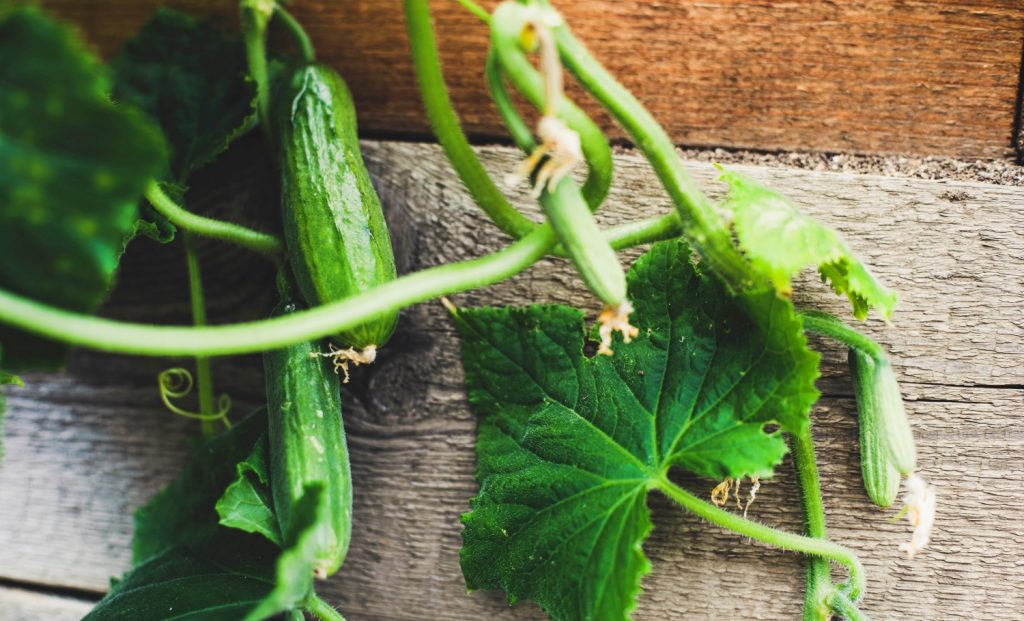
Prevents rot
Keeping those zucchinis up off the ground means they never get a chance to trap moisture. No moisture means no rot, which means more veggies for you to enjoy.
As is the case for tomatoes, fruits may develop rot as a result of calcium deficiency. So feeding zucchini bone meal at the start of the season can also prevent rot.
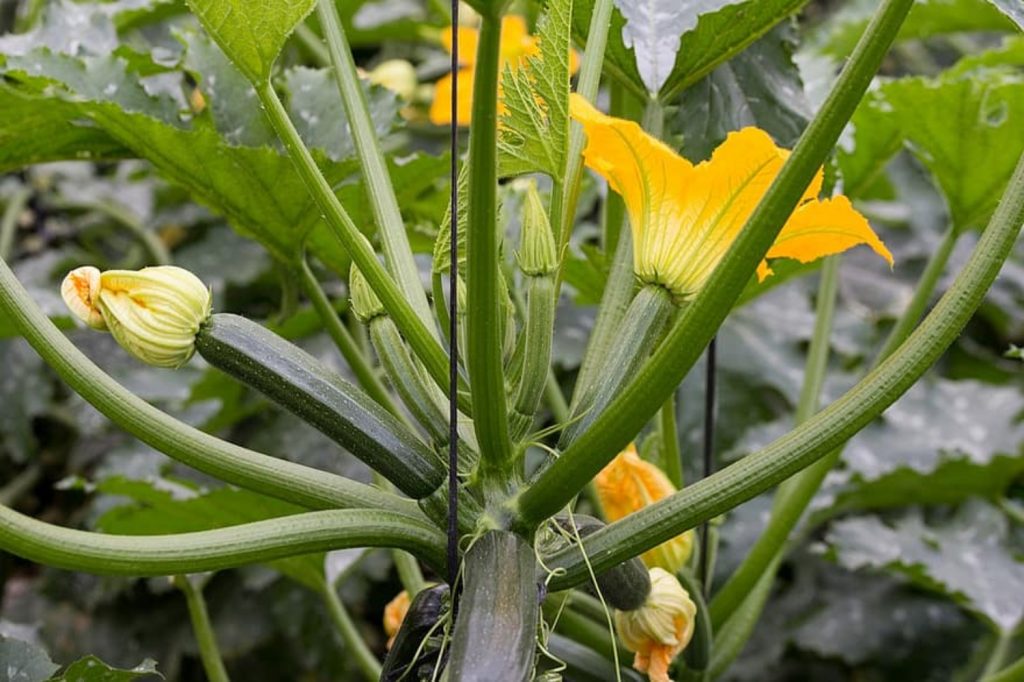
Encourages healthy pollination
Pollinators are more likely to visit the flowers that are easiest to get to. Training your zucchini to grow vertically puts more of the plant’s blossoms on display for nearby bees, butterflies, and moths.
Growing zucchini upward also makes hand pollination a breeze. Zucchini are not self-pollinating, so they benefit from being hand pollinated.
Training your zucchini to climb allows you to pollinate the flowers quickly and efficiently by hand with the help of a tiny paintbrush. This can dramatically increase crop production.

Fights insect infestation
Keeping the plants and their fruits up off of the ground also fights insect infestation.
If bugs can’t reach the fruits, they won’t be able to eat the fruits. Makes sense.
And, in the event that your zucchini do fall prey to an insect infestation, growing them vertically makes it easier to treat them because you can reach all sides of the foliage to spray them down with a homemade insecticide.
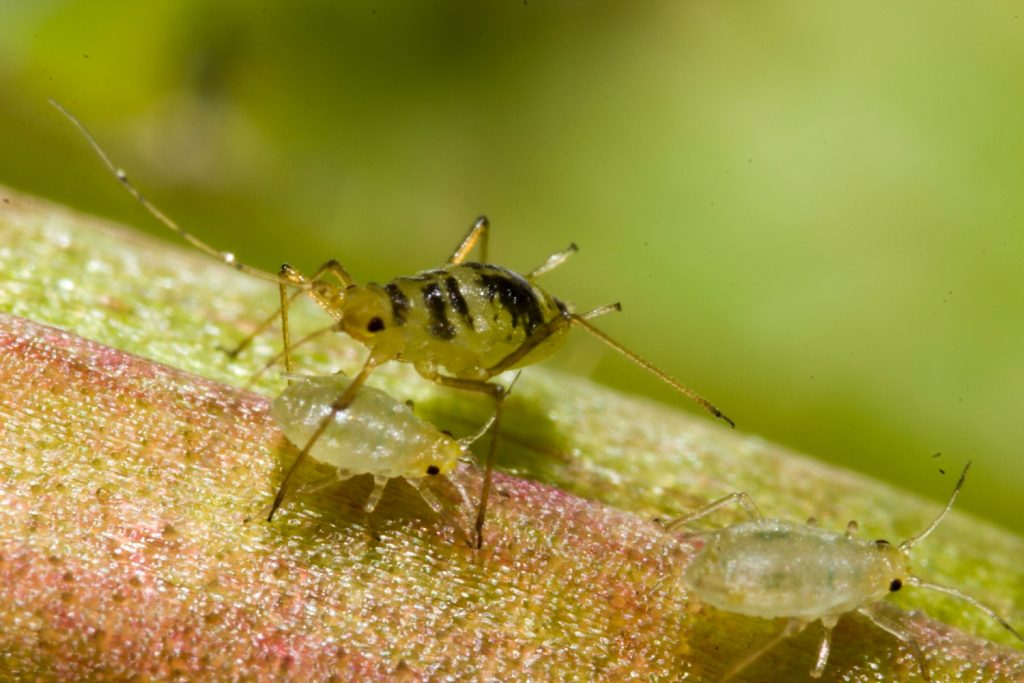
Bigger harvest
All of these advantages work together to bring you a better harvest.
Keeping your plants healthy by protecting them from pathogens and warding off damaging insects allows them to grow their best.
When plants don’t have to worry about fending off diseases or insects, then they can focus all of their resources on producing loads of healthy vegetables.
Zucchini plants produce 6 to 10 zucchini on average.
By supporting your crop with the help of a trellis, you can maximize your harvest so you have plenty of homegrown zucchinis to share with your family and friends.
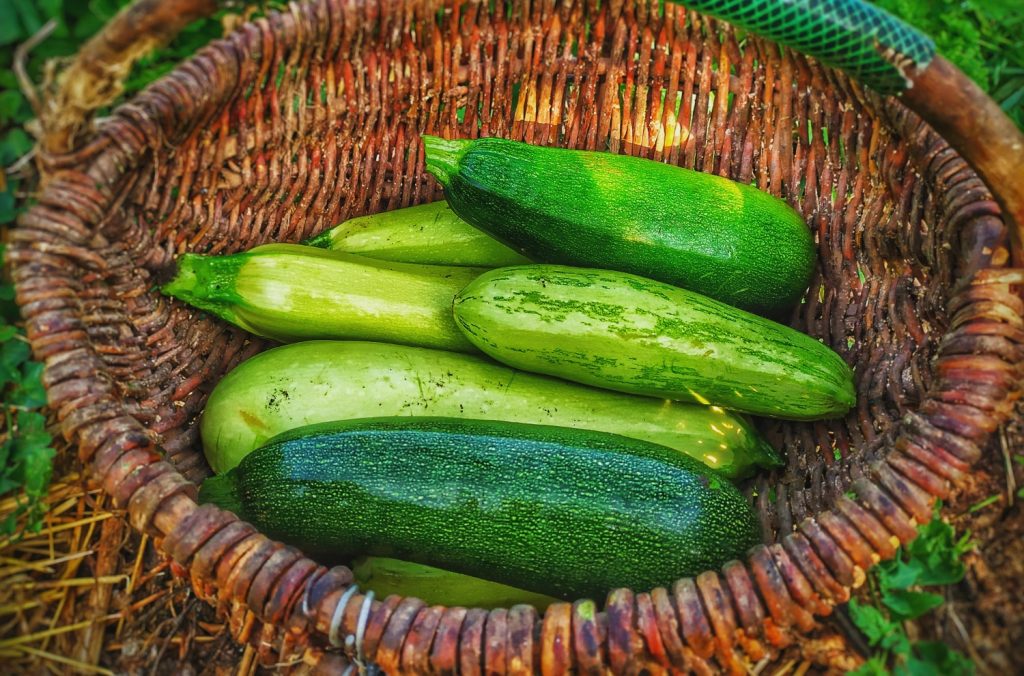
Easier harvesting
Not only will you have more zucchini to enjoy, but you’ll also have a much easier time harvesting them, too.
Let’s face it, growing vegetables on the ground is hard on the back, knees, and, well, everything else.
Training your zucchini to grow vertically is much better for your joints. It allows you to inspect all parts of the plant without having to work too hard — after all, who wants to work too hard? Gardening is supposed to be fun!
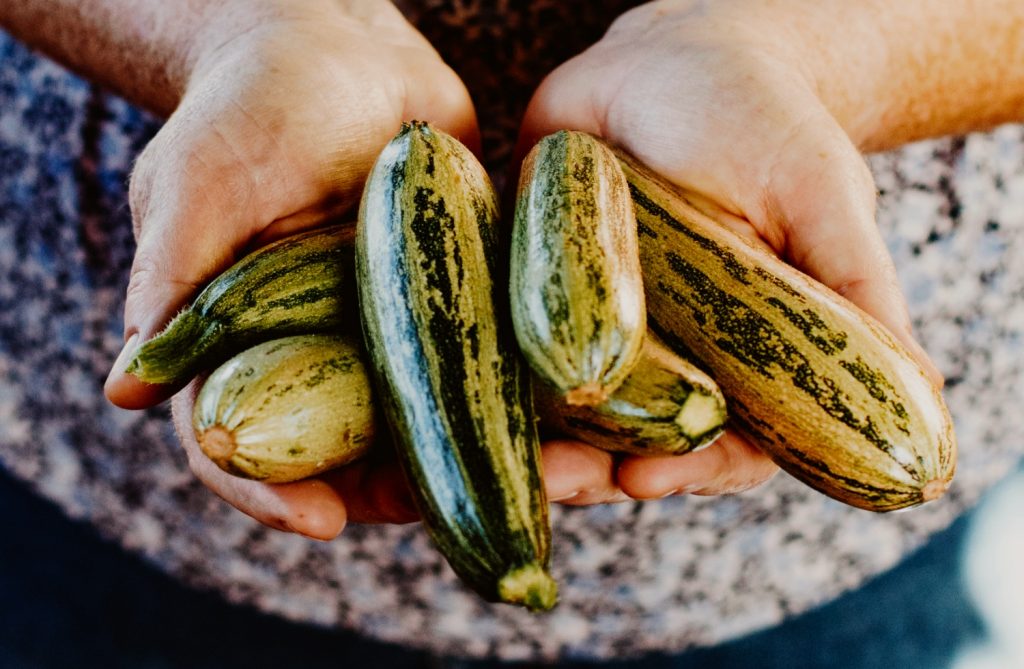
How to train your zucchini to climb a trellis
Zucchini are hardy plants, that’s one of the reasons why they’re so popular.
If you want to train your zucchini crop to grow up a trellis, there’s really nothing to it!
Here’s how you can start growing your zucchini vertically and save space in your backyard garden.
Choose the right cultivar
Some zucchini cultivars are better for growing up trellises than others.
Look for ‘Dark Start’, ‘Black Beauty’, and ‘Cocozelle’ varieties. These zucchinis tend to grow more upward than outward and are naturally suited to growing along trellises.
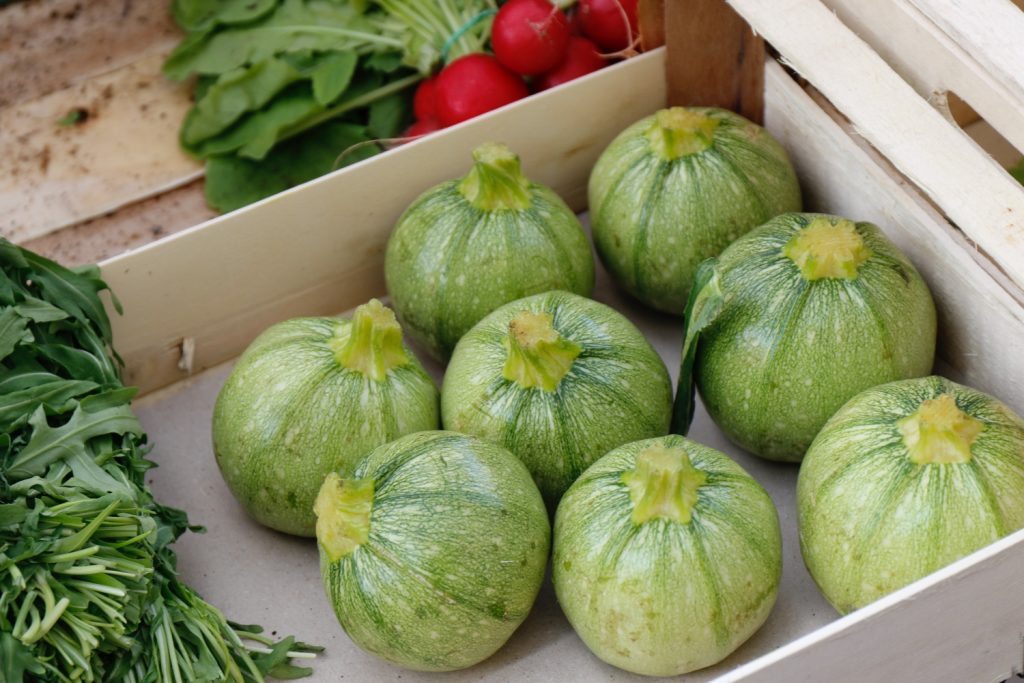
Start when plants are young
Mature plants can be difficult to untangle and train to grow vertically. So you’ll need to start training your zucchini plants while they’re still seedlings.
Once you’ve transplanted your seedlings out to the garden, secure them to the trellis of your choice as soon as the plant’s little tendrils can reach it.
You’ll need to monitor the plant as it grows and continue to fasten its branches to the trellis to keep it growing in the right direction.
With vigilance, the plant will soon get the idea and start latching onto the trellis on its own.
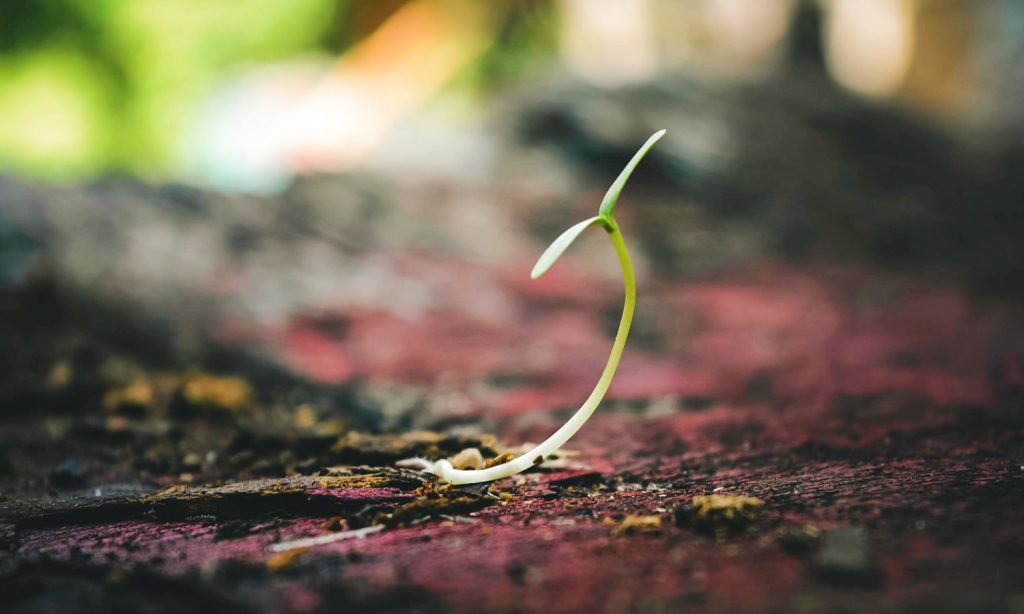
Give the plants enough light
Zucchini plants need 6 or more hours of sunlight per day to perform their best.
Ensuring your zucchini plants get plenty of sunlight allows them to grow rapidly, so they can cover your trellis quickly.
You’ll have an easier time training your zucchini to climb if it gets plenty of sunlight. Plants rely on sunlight to make food for themselves, so this also encourages the plants to produce more fruits once they start reproducing.
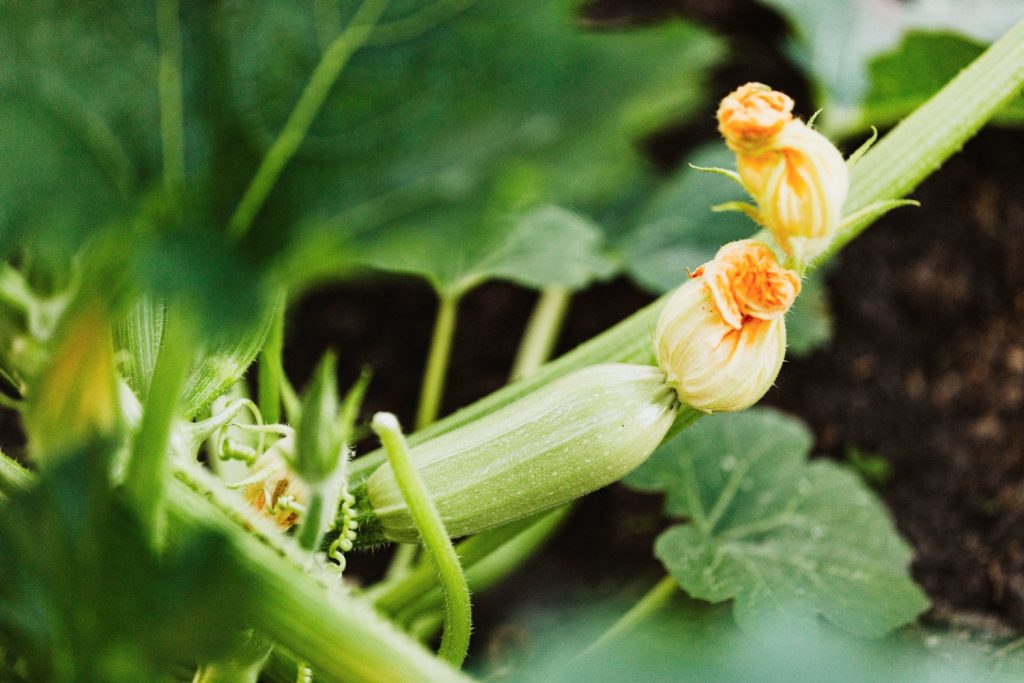
Space the plants far enough apart
Like other climbing plants, zucchinis can smother each other if they’re not kept in check.
When planting your seedlings, be sure to space the plants far enough apart that they won’t encroach on each other’s space as they grow.
Plant your zucchini seedlings 16” to 24” inches apart to give the plants plenty of room to branch out.
Be sure to keep the plant’s soil evenly moist until they get established, and water them deeply when the soil dries out to encourage strong roots and healthy foliage.
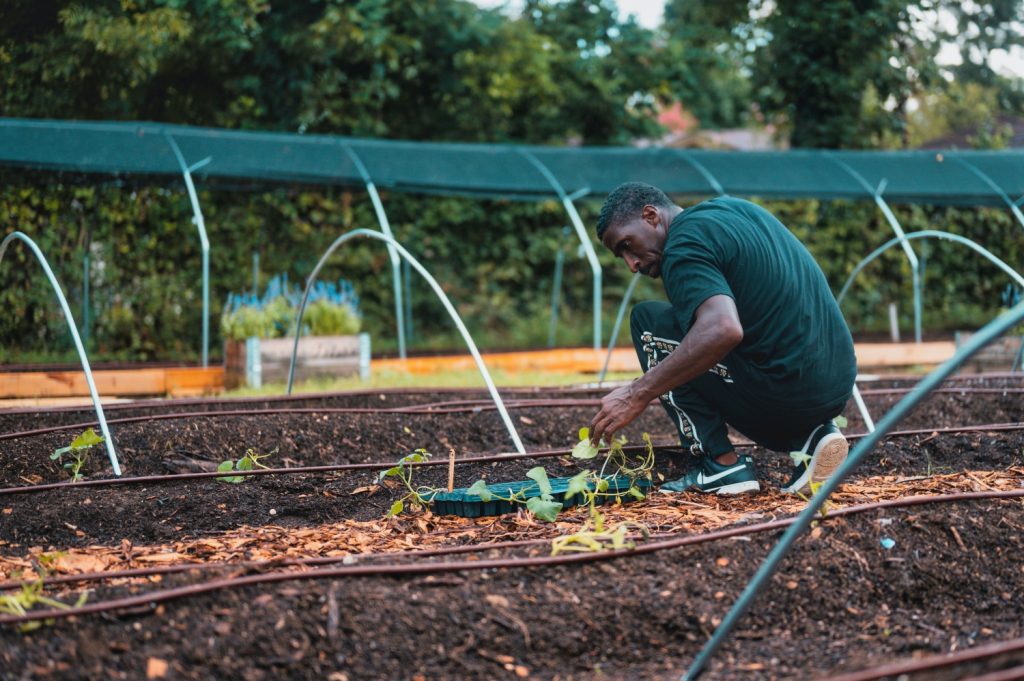
Harvest fruits often
Once your zucchini begins producing, watch the plant closely. The more often you harvest zucchini, the better the plants will grow, and the more fruits they will produce.
Ideally, you should harvest your zucchini when they measure 6 to 8 inches long. This way, the fruits will be nice and crisp. Longer fruits tend to be tough, leathery, and dry.
It’s equally important to remove dying, shriveled fruits, so the plant doesn’t waste resources on them.
If you find the zucchinis themselves are too heavy for the plant, then use pantyhose or breathable cloth to create a sling for the fruits. Secure the sling to the trellis to take the pressure off the vine.
More tips for growing healthy zucchini
In addition to growing your zucchini vertically, there are a few other things that you can do to ensure you get a crop worth harvesting.
Be sure to plant your zucchini in fertile, well-draining soil that is rich in organic matter. Adding compost, manure, and kelp meal to your garden’s soil provides plants with key nutrients and results in better-tasting zucchini.
Planting your zucchini near their preferred companion plants will also help support crop development. Growing your zucchini near nasturtiums and sunflowers attracts beneficial pollinators while keeping zucchini near herbs like dill and thyme helps the crop ward off pesky insects.
With a little careful planning, you can grow a delicious crop of zucchini, even if you’re short on space. Building a zucchini trellis allows you to make the most of your garden so you can plant more of the fruits and veggies you love.
